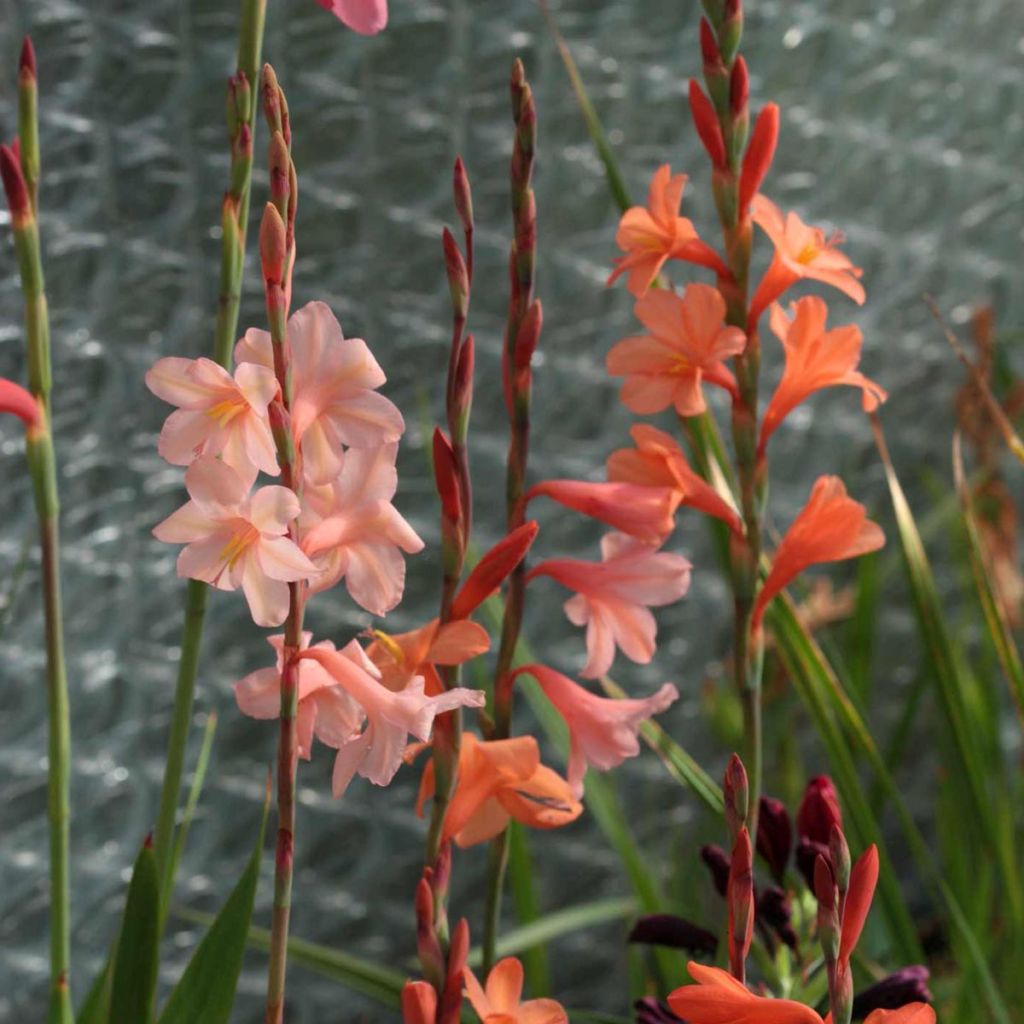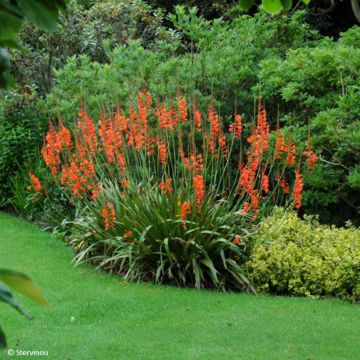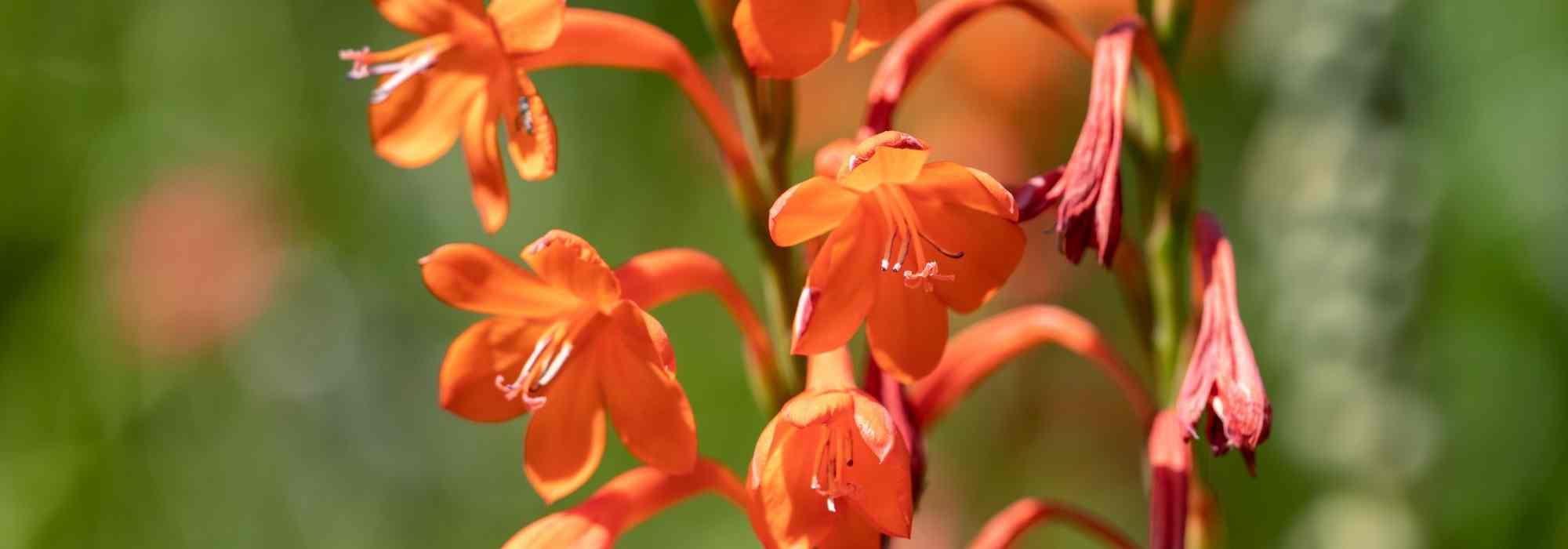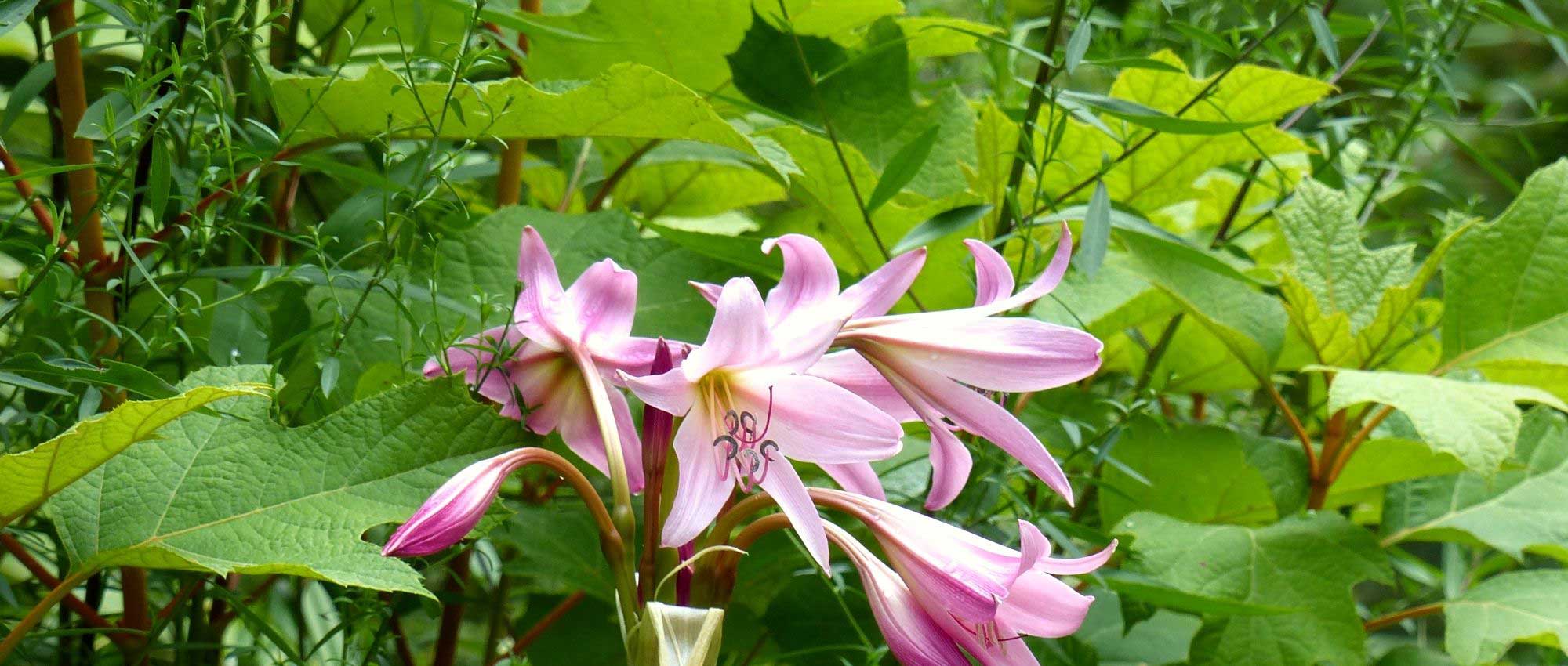

Watsonia pyramidata Peach Glow
Watsonia pyramidata Peach Glow
Watsonia pyramidata Peach Glow
Watsonia borbonica 'Peach Glow'
Disappointed. I planted the bulbs quickly in early April, but only a few leaves popped up. Nothing more since then and now it's October. I will overwinter them in the conservatory hoping to see more next year.
Luce, 05/10/2020
Special offer!
Receive a €20 voucher for any order over €90 (excluding delivery costs, credit notes, and plastic-free options)!
1- Add your favorite plants to your cart.
2- Once you have reached €90, confirm your order (you can even choose the delivery date!).
3- As soon as your order is shipped, you will receive an email containing your voucher code, valid for 3 months (90 days).
Your voucher is unique and can only be used once, for any order with a minimum value of €20, excluding delivery costs.
Can be combined with other current offers, non-divisible and non-refundable.
Why not try an alternative variety in stock?
View all →This plant carries a 6 months recovery warranty
More information
We guarantee the quality of our plants for a full growing cycle, and will replace at our expense any plant that fails to recover under normal climatic and planting conditions.
Would this plant suit my garden?
Set up your Plantfit profile →
Description
Native to the western Cape province of South Africa, the Watsonia pyramidata or borbonica 'Peach Glow' is a not very hardy bulbous plant that bears tall spike-like flower heads in spring, adorned with numerous flowers similar to delicate and bright peach-coloured crocuses. The floral stems rise above a clump of narrow sword-shaped leaves, reminiscent of gladioli leaves, which are almost evergreen in very moist soil. It is a plant that is easy to cultivate in pots but very delicate in open ground under our climate.
Belonging to the Iridaceae family, like Crocosmias, Schizostylis and Dietes, the Watsonia pyramidata is a cormous plant with medium-sized, glossy, tapering foliage, similar to that of gladioli, reaching a height of 60 cm (24in). In its native habitat, it grows in sandy terrain on rocky slopes, high plateaus, and grassy slopes. From late spring to early summer, depending on the climate, it forms erect, branched inflorescences, reaching a height of 140 cm (55in), adorned with 15 to 20 elongated, flared trumpet-shaped flowers in a delicate and shiny peach colour. They measure 4 to 5 cm (2in) in length and are slightly upward-facing. Left to its own devices in a mild climate, the plant will gradually form beautiful clumps through the production of underground bulbils and creeping tubers.
Stunning in the spring sunlight, the Watsonia pyramidata 'Peach Glow' flower heads allow for the creation of unique and colourful scenes. Their flowering, just after daffodils, will accompany the arrival of Asiatic lilies and ornithogalums. Mix your Watsonia bulbs with Kniphofias, Crocosmias, Libertias, and Carex for a modern, exotic-looking border. This plant is cultivated like gladioli, which are dug up after the foliage has turned yellow and replanted early in spring, resulting in later flowering. It also makes beautiful container plants for decorating the terrace or balcony.
Plant habit
Flowering
Foliage
Botanical data
Watsonia
pyramidata
Peach Glow
Iridaceae
Watsonia borbonica 'Peach Glow'
Cultivar or hybrid
Other Watsonia
View all →Planting and care
Easy to grow in a warm and semi-shaded location, moist until mid-June, Watsonia pyramidata 'Peach Glow' does not tolerate limestone soils and rarely survives in the ground. It is in vegetation until the end of June, then goes dormant with the summer drought. If you still want to try growing it in the ground, it should be planted in a shaded location in summer and protected from winds in winter. The other alternative is to grow it like a gladiolus. Plant the bulbs facing south, on a sand dune, in a rockery or slope. While they prefer well-drained soil in winter, watsonias need water during their growing period. When planting, replace your topsoil with pure sand to maximise drainage and bury the bulbs at 6-8cm (2-3in). In colder regions, store the bulbs in a box filled with turf and keep them dry and frost-free.
Planting period
Intended location
Care
Planting & care advice
-
, onOrder confirmed
Reply from on Promesse de fleurs
Haven't found what you were looking for?
Hardiness is the lowest winter temperature a plant can endure without suffering serious damage or even dying. However, hardiness is affected by location (a sheltered area, such as a patio), protection (winter cover) and soil type (hardiness is improved by well-drained soil).

Photo Sharing Terms & Conditions
In order to encourage gardeners to interact and share their experiences, Promesse de fleurs offers various media enabling content to be uploaded onto its Site - in particular via the ‘Photo sharing’ module.
The User agrees to refrain from:
- Posting any content that is illegal, prejudicial, insulting, racist, inciteful to hatred, revisionist, contrary to public decency, that infringes on privacy or on the privacy rights of third parties, in particular the publicity rights of persons and goods, intellectual property rights, or the right to privacy.
- Submitting content on behalf of a third party;
- Impersonate the identity of a third party and/or publish any personal information about a third party;
In general, the User undertakes to refrain from any unethical behaviour.
All Content (in particular text, comments, files, images, photos, videos, creative works, etc.), which may be subject to property or intellectual property rights, image or other private rights, shall remain the property of the User, subject to the limited rights granted by the terms of the licence granted by Promesse de fleurs as stated below. Users are at liberty to publish or not to publish such Content on the Site, notably via the ‘Photo Sharing’ facility, and accept that this Content shall be made public and freely accessible, notably on the Internet.
Users further acknowledge, undertake to have ,and guarantee that they hold all necessary rights and permissions to publish such material on the Site, in particular with regard to the legislation in force pertaining to any privacy, property, intellectual property, image, or contractual rights, or rights of any other nature. By publishing such Content on the Site, Users acknowledge accepting full liability as publishers of the Content within the meaning of the law, and grant Promesse de fleurs, free of charge, an inclusive, worldwide licence for the said Content for the entire duration of its publication, including all reproduction, representation, up/downloading, displaying, performing, transmission, and storage rights.
Users also grant permission for their name to be linked to the Content and accept that this link may not always be made available.
By engaging in posting material, Users consent to their Content becoming automatically accessible on the Internet, in particular on other sites and/or blogs and/or web pages of the Promesse de fleurs site, including in particular social pages and the Promesse de fleurs catalogue.
Users may secure the removal of entrusted content free of charge by issuing a simple request via our contact form.
The flowering period indicated on our website applies to countries and regions located in USDA zone 8 (France, the United Kingdom, Ireland, the Netherlands, etc.)
It will vary according to where you live:
- In zones 9 to 10 (Italy, Spain, Greece, etc.), flowering will occur about 2 to 4 weeks earlier.
- In zones 6 to 7 (Germany, Poland, Slovenia, and lower mountainous regions), flowering will be delayed by 2 to 3 weeks.
- In zone 5 (Central Europe, Scandinavia), blooming will be delayed by 3 to 5 weeks.
In temperate climates, pruning of spring-flowering shrubs (forsythia, spireas, etc.) should be done just after flowering.
Pruning of summer-flowering shrubs (Indian Lilac, Perovskia, etc.) can be done in winter or spring.
In cold regions as well as with frost-sensitive plants, avoid pruning too early when severe frosts may still occur.
The planting period indicated on our website applies to countries and regions located in USDA zone 8 (France, United Kingdom, Ireland, Netherlands).
It will vary according to where you live:
- In Mediterranean zones (Marseille, Madrid, Milan, etc.), autumn and winter are the best planting periods.
- In continental zones (Strasbourg, Munich, Vienna, etc.), delay planting by 2 to 3 weeks in spring and bring it forward by 2 to 4 weeks in autumn.
- In mountainous regions (the Alps, Pyrenees, Carpathians, etc.), it is best to plant in late spring (May-June) or late summer (August-September).
The harvesting period indicated on our website applies to countries and regions in USDA zone 8 (France, England, Ireland, the Netherlands).
In colder areas (Scandinavia, Poland, Austria...) fruit and vegetable harvests are likely to be delayed by 3-4 weeks.
In warmer areas (Italy, Spain, Greece, etc.), harvesting will probably take place earlier, depending on weather conditions.
The sowing periods indicated on our website apply to countries and regions within USDA Zone 8 (France, UK, Ireland, Netherlands).
In colder areas (Scandinavia, Poland, Austria...), delay any outdoor sowing by 3-4 weeks, or sow under glass.
In warmer climes (Italy, Spain, Greece, etc.), bring outdoor sowing forward by a few weeks.










































